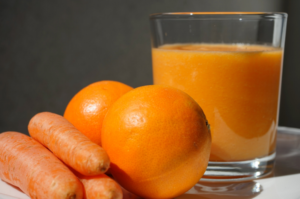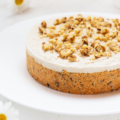Carrot juice is not only delicious but also packed with essential vitamins and minerals that promote overall health and well-being. Whether you’re looking to boost your immune system, improve eye health, or simply enjoy a refreshing beverage, homemade carrot juice is the way to go. In this comprehensive guide, we will walk you through the process of making carrot juice at home, highlighting the benefits, different flavor combinations, and various methods to suit your preferences.
The Health Benefits of Carrot Juice
Carrots are often hailed as a superfood due to their high nutritional value. They are rich in beta carotene, which is converted into vitamin A in the body, essential for maintaining healthy vision and skin[^1^]. Carrot juice is also an excellent source of vitamin C, an antioxidant that boosts the immune system and fights off free radicals and oxidative stress[^2^]. Regular consumption of carrot juice has been linked to improved eye health, reduced cholesterol levels, and even relief from constipation[^3^].
Getting Started: Ingredients and Equipment
To make delicious carrot juice, you’ll need a few basic ingredients and equipment. Here’s what you’ll need:
Ingredients
- Fresh carrots: Choose young and tender carrots for the best flavor and nutritional value.
- Oranges: Oranges add sweetness and tanginess to the juice, complementing the earthy flavor of carrots.
- Ginger: Fresh ginger adds a subtle kick and offers numerous health benefits, including anti-inflammatory properties.
- Optional additional fruits or vegetables: You can experiment with different combinations by adding fruits like apples, pineapples, or vegetables like celery and cucumbers.
Equipment
- Blender or juicer: You can use either a blender or a juicer to make carrot juice. Both methods have their advantages, and we’ll explore each one in detail.
Making Carrot Juice with a Blender
Using a blender is a convenient and accessible way to make carrot juice at home. Follow these simple steps to get started:
Step 1: Prepare the Carrots
Start by rinsing the carrots under running water and scrubbing them with a vegetable scrub to remove any dirt or impurities. You can choose to peel the carrots or leave the skin on, depending on your preference. Chop the carrots into small pieces to ensure they blend easily.
Step 2: Add Ingredients to the Blender
Place the chopped carrots in the blender along with a small piece of peeled ginger. If desired, you can also add a splash of orange juice or coconut water to enhance the flavor. Adding ice cubes will help keep the juice cool and refreshing.
Step 3: Blend Until Smooth
Blend the ingredients until you achieve a smooth consistency. If necessary, you can add a little water to adjust the thickness of the juice.
Step 4: Strain the Juice (Optional)
If you prefer a smoother texture, strain the juice through a fine sieve or cheesecloth to remove any pulp or fibers. This step is optional, as some people enjoy the added fiber in their carrot juice.
Step 5: Serve and Enjoy
Pour the freshly made carrot juice into glasses and serve immediately. You can also refrigerate it for a few hours to chill before serving.
Making Carrot Juice with a Juicer
If you have a juicer at home, you can use it to extract the juice from carrots more efficiently. Here’s how to make carrot juice using a juicer:
Step 1: Soak and Prepare the Carrots
Soak the carrots in clean water for at least 30 minutes before juicing. This step helps soften the carrots and makes the extraction process easier. After soaking, rinse the carrots and chop them into smaller pieces.
Step 2: Juice the Carrots
Feed the chopped carrots into the juicer’s chute one at a time, allowing the juicer to extract the juice. Take your time and avoid overloading the juicer to prevent clogging.
Step 3: Optional Additions
If desired, you can add other ingredients like deseeded oranges, celery, or cucumbers to enhance the flavor and nutritional profile of the juice.
Step 4: Dilute and Serve
Once the juice is extracted, you can dilute it with other juices or water to achieve your desired taste. Pour the carrot juice into a jug or pitcher and refrigerate if desired. Serve chilled and enjoy!
Flavor Combinations and Variations
While carrot juice on its own is delicious, you can get creative by adding different fruits, vegetables, or spices to enhance the flavor profile. Here are a few popular flavor combinations and variations to try:
Carrot and Orange
Carrot and orange make a classic combination, with the sweetness of the oranges balancing out the earthy flavor of the carrots. This combination is a great way to introduce newcomers to carrot juice.
Carrot and Ginger
Adding fresh ginger to carrot juice not only adds a zingy kick but also offers numerous health benefits. Ginger is known for its anti-inflammatory properties and can aid digestion, making it a perfect addition to your juice.
Carrot and Pineapple
For a tropical twist, try adding pineapple to your carrot juice. Pineapple adds a touch of acidity and sweetness, creating a refreshing and flavorful beverage.
Carrot and Celery
Combining carrots and celery creates a refreshing and hydrating juice. Celery adds a subtle, savory flavor and is known for its digestive benefits, making this combination a great choice for those with digestive issues.
Feel free to experiment with different combinations and find the flavors that suit your taste preferences.
Tips for the Best Carrot Juice
To ensure you get the most out of your homemade carrot juice, here are some tips to keep in mind:
- Choose fresh, young carrots for the best flavor and nutritional value. Avoid using carrots that have been sitting on the shelves for too long, as they may have lost some of their nutrients.
- If using a blender, consider soaking the carrots beforehand to soften them and improve the blending process.
- If using a juicer, take your time and feed the carrots into the chute slowly to prevent clogging and ensure optimal juice extraction.
- Add other fruits or vegetables to your juice for added flavor and nutritional benefits. Just make sure to balance the flavors and choose combinations that work well together.
- If you prefer chilled carrot juice, refrigerate the ingredients before juicing rather than chilling the juice itself after extraction. This helps preserve the nutrients and flavors.




